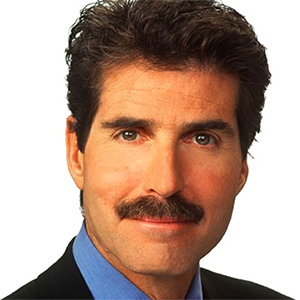Commentary: Why Medicaid work requirements won't work
Published in Op Eds
The U.S. labor market is a truly astonishing thing to behold. It includes 171 million Americans, as young as 14 and older than 90, some who never finished elementary school and others with PhDs.
It is resilient and dynamic, shrinking during recessions but growing again after. It provides the majority of Americans with the majority of their income.
All of which is to say: It is common to look to the labor market as a kind of salve for all economic wounds. Whatever the problem is, the solution is to get people working. Unfortunately, it’s not that simple.
For all its strength, the labor market is encumbered by the low-wage labor market — where work doesn’t support a stable living, and where jobs are so bad they’re more salt than salve. This is a reality that Republicans in Congress, in their current push to impose work requirements on Medicaid recipients, ignore. They are making policy for a labor market that doesn’t exist.
The “low-wage labor market” is a vague designation. It’s typically defined as those workers who have relatively or absolutely low hourly earnings, such as the bottom quintile or quarter of wage earners, or earners below some nominal wage cutoff.
Whatever the definition, however, there are some aspects of the low-wage labor market that are obvious:
The low-wage labor market is large. At least 39 million workers in the U.S. earn less than $17 an hour, which is the equivalent of $35,360 annually. That is just below 138% of the poverty threshold for a family of three — the income needed for parents to be eligible for Medicaid in states that expanded it under the Affordable Care Act.
Earnings in the low-wage labor market are volatile. Earnings volatility measures change in wage income from one month to the next. Instability at both the very top and very bottom is so great that economists have a term for it: the “wild ride.”
Recent research from the Brookings Institution’s Hamilton Project shows that low-wage earners see more spikes and dips in income than any other group, with the dips being especially large. They have the most volatile earnings when measured by the coefficient of variation, regardless of whether the household has a single or multiple earners.
That volatility can be partly attributed to unpredictable hours. Many low-wage earners are employed in shift work, in which their hours and schedule can vary week to week, often with little notice.
According to Harvard’s Shift Project, two-thirds of workers in retail and food service get less than two weeks’ notice of their schedule, half get less than one week’s notice, and 70% report that the timing of their scheduled shifts changes at least once a month. This flexibility is more likely to be imposed by employers rather than requested by employees; the more volatile the hours, the fewer hours typically worked.
Low-wage jobs usually also have low-quality benefits. Of private-sector workers in the bottom 25% of the wage distribution, 30% do not have access to any type of leave, whether it is sick, holiday, vacation or personal. Some 56% do not have access to an employer-sponsored health-care plan, while 84% do not have access to an employer-sponsored dental plan. And 50% do not have access to a defined-contribution retirement plan.
The bottom line is clear. Working Americans are eligible for social benefits such as Medicaid not only because their pay isn’t high enough, but also because it isn’t reliable enough.
Classic labor theory holds that workers are balancing two conflicting goals: the consumption of purchased goods, and the consumption of leisure time. The former requires time at work; the latter requires time away from work. It is up to the worker to calibrate how much of each they want.
Of course, economists will try to predict how workers and consumers will react to any change in their earnings. If a worker gets a wage increase, the “income effect” would push them to work less: They can still consume the same amount of purchased goods but also have more leisure time.
Alternatively, a wage increase could trigger the “substitution effect,” pushing them to work more: The price of leisure (foregone wages) is now more expensive.
But what if that worker gets a non-wage increase from a public benefit? There is no substitution effect, just the income effect — that is, they would work less. This is the economic foundation for the idea that public benefits discourage work. Work requirements are meant to counter this incentive.
It sounds reasonable. But for at least 39 million Americans, work brings low wages, unstable earnings, unpredictable hours and few benefits. It’s hard to argue that workers are calibrating exactly how to balance consumption and leisure if they have an 84% swing in their monthly earnings, or if they are among the two-thirds with income so volatile that they struggle to pay their bills.
Which is why the evidence shows that work requirements have no effect on work. It’s also why there is such an outcry against adding them to Medicaid. It is cruel to kick people off a program that saves lives.
Economists have an occupational privilege: As with the income effect, which is real but can be subsumed by other factors, we can be right in theory but wrong in practice. Members of Congress have no such luxury. They only have one scorecard — reality — and work requirements get a failing grade.
_____
This column reflects the personal views of the author and does not necessarily reflect the opinion of the editorial board or Bloomberg LP and its owners.
Kathryn Anne Edwards is a labor economist and independent policy consultant.
©2025 Bloomberg L.P. Visit bloomberg.com/opinion. Distributed by Tribune Content Agency, LLC.

























































Comments